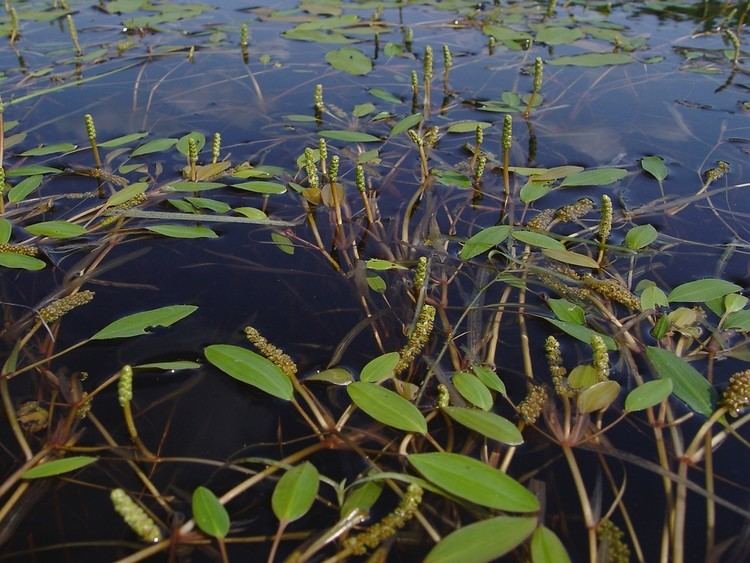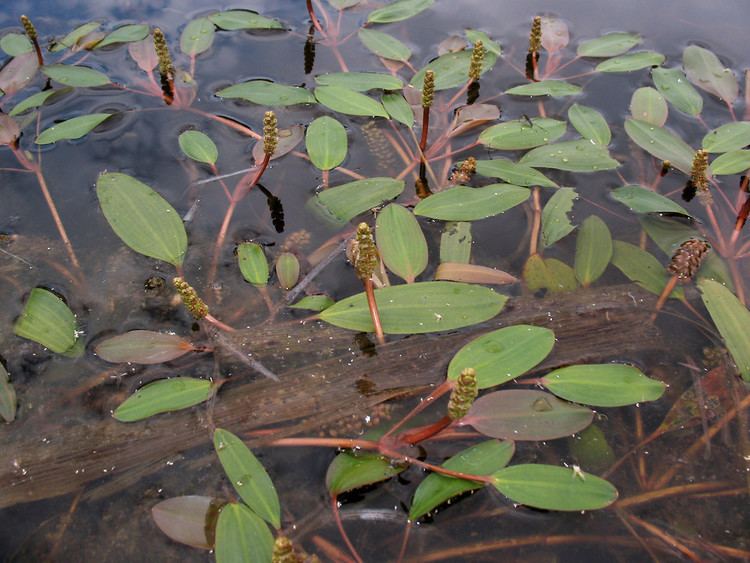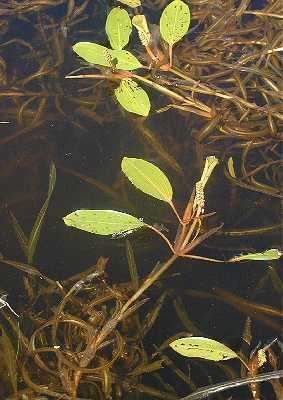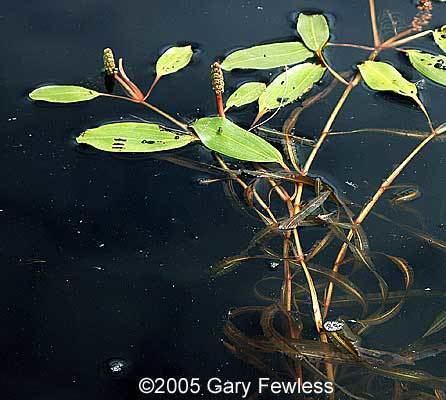Genus Potamogeton Rank Species | ||
 | ||
Similar Potamogeton amplifolius, Potamogeton robbinsii, Potamogeton richardsonii, Potamogeton foliosus, Potamogeton pusillus | ||
Potamogeton epihydrus american pondweed
Potamogeton epihydrus is a perennial aquatic plant known by the common name ribbonleaf pondweed, Nuttall's pondweed (not to be confused with Elodea nuttallii) or in Britain and Ireland American pondweed. It is native to much of North America, where it grows in water bodies such as ponds, lakes, ditches, and slow-moving streams.
Contents
- Potamogeton epihydrus american pondweed
- Description
- Taxonomy
- Distribution
- Ecology and Conservation
- Cultivation
- References

Description

This is a perennial, rhizomatous herb producing narrow, compressed, unspotted stems to a maximum length of about 1 m. The stems are either unbranched or sparingly branched. It has two types of leaf. The submersed leaves are sessile 5-25 cm long and 0.1-1 cm wide, translucent, linear in shape and ribbonlike, red-brown to light green in colour with a blunt to acute tip. The floating leaves are similar to the floating leaves of other Potamogeton, petiolate and opaque, up to 8 centimeters long and 3 wide.

The inflorescence is a small spike of flowers that arises from the water on a peduncle 1.5-5 (rarely up to 16) cm.

This is a diploid species, with 2n = 26. Hybrids have been described with P. gramineus, P. nodosus (P. × subsessilis Hagstrom), P. bicupulatus (P. × aemulans Z. Kaplan, Hellq. and Fehrer), and P. perfoliatus (P. × versicolor Z. Kaplan, Hellq. and Fehrer).
Taxonomy

Potamogeton epihydrus (meaning 'on the water surface') was described by Rafinesque in 1808, one of the earlier North American species to be named.

DNA analysis indicates that, despite the presence of floating leaves P. epihydrus is closely related to P. tennesseensis. These two are within the basal part of the large clade of fine-leaved pondweeds including P. diversifolius, P. pusillus and P. compressus.
Distribution
Ribbonleaf pondweed is predominantly a North American species, and is widespread in boreal and temperate North America. Its centre of distribution is the northeastern USA and southeastern Canada from the Atlantic to the Great Lakes, and on the Pacific seaboard from northern California to British Columbia. However, there are scattered populations in Alabama and Louisiana, Alaska, Wyoming, Montana and central Canada.
There are also two isolated populations in Britain, where it was identified as recently as 1944. The Outer Hebrides population is thought to be naturally occurring; there is also an accidentally introduced population in the Rochdale and Calder & Hebble Canals.
Ecology and Conservation
Ribbonleaf pondweed generally grows in shallow, standing to slow-flowing standing and running waters at up to 1900 m altitude. It tolerates acid waters as low as pH 5 and has a preference for oligotrophic, soft water conditions. Nevertheless, liming experiments suggest that ribbonleaf pondweed is sensitive to severe acidification. P. epihydrus is a poor disperser relative to many other aquatic plants occurring in Connecticut lakes.
Ribbonleaf pondweed is generally common and widespread in North America. However, it is listed as Endangered in Indiana and Special Concern in Tennessee. In Britain it is Nationally Rare and listed as Vulnerable. British populations lack detectable genetic variation, suggesting a strong founder effect.
Cultivation
P. epihydrus is not in cultivation, but would be worth attempting to grow. Its fairly small size, ribbon-like underwater leaves and scattered floating leaves could be effectively used in a garden pond, tub or stream. Introduced populations in Britain have not proved invasive, so there is little chance of it becoming problematic. Like other pondweeds, it needs to be planted with the root in contact with a suitable substrate such as aquatic compost.
